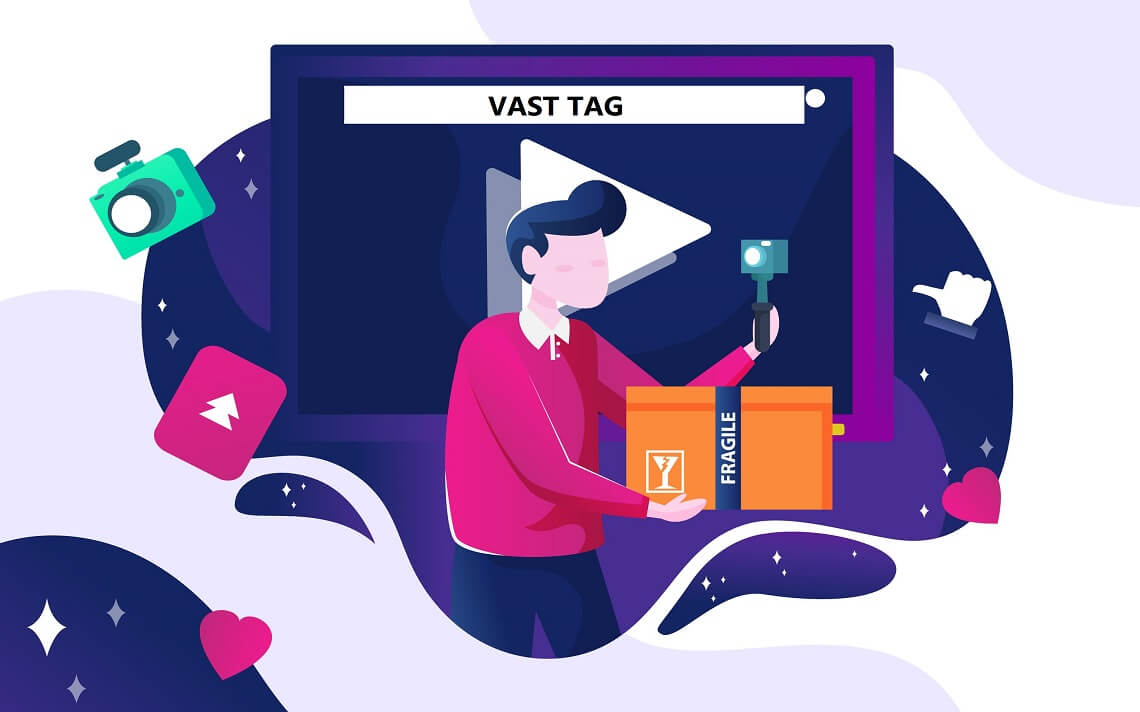
Server-side header bidding carries out key header bidding processes via servers rather than the traditional browser.
Table of Contents
on Feb 27, 2025

Tags are the formats used for commands in the Interactive Advertising Bureau’s Video Ad Serving Template (VAST). As mentioned in our entry on the protocol, VAST Tag gives advertisers a standard, XML-based language for bridging ad servers and multiple kinds of video players. That language uses tags — bits of code — that let advertisers indicate particular properties or controls for the video player to read and execute.
Some of the information that a VAST tag can carry include:
As some industry experts have noted, VAST tags function “like a third-party Javascript tag but exclusively for video.”
The specifics of each VAST tag differ according to the information that an advertiser wants to convey to the audience’s video players. In general, though, you will see something resembling HTML, with property elements indicated using simple assignments in each tag:
So what’s in a VAST tag?
One thing common to any set of VAST tags is a link to the media file that constitutes the ad material. In the basic example above, the CDATA wrapper indicates the URL from which the video player can pull the ad’s constituent file. In other cases, the code will point to a specific ad server, which will then supply the file when called upon by the video player.
As seen in the example above, advertisers also use VAST tags to indicate the particular format used for an ad video file. In this case, the tag lets the video player know that the file is in mp4 format. Later versions of VAST added support for other file formats — not necessarily single media — like Flash and Javascript.
A VAST tag also indicates what kind of ad will be played. This gives the advertiser some control over how the ad is played in relation to the content, e.g., pre-roll (before the content is played) or overlays (superimposed on the content). Like the range of supported file formats, later versions of VAST expanded its ad type support to give advertisers more sophisticated options like ad pods (set of ads displayed in sequence to fill an ad break).
VAST also includes a host of elements designed for tracking ad performance across a range of levels. Usually, these elements provide a URL that points the video player to a specific resource file or location hosted on an ad server. Those resource files then relay a tracking pixel — a transparent single-pixel image — that registers a particular event or impression during ad playback.
The VAST protocol carries a multitude of tags and elements for advanced options, too. You’ll find elements for dealing with interactive ad content; high-quality, long-form ad files; and more. As the technology and practices of the digital video advertising has evolved, so has the library of tag elements available for use through the VAST protocol.
As discussed in other posts on VAST, the protocol gives advertisers, producers, video player developers, and other members of the industry a common language for serving and executing digital video ads.
For advertisers, VAST tags provide a succinct, standardized vocabulary for articulating how they want ads to be displayed and tracked. Tags eliminate the risk of variable instructions and subsequent playback error, all while giving advertisers more reliable control over the execution of their video ads.
Featured Posts

Server-side header bidding carries out key header bidding processes via servers rather than the traditional browser.

This quarter, we’ve rolled out a series of updates designed to give publishers more flexibility, stronger monetization opportunities, and an even smoother experience with the Aniview platform.

Table of Contents1 Background2 Mitigation & Next Steps3 Summary Today at around 13:20 UTC, due to networking issues and several
Adding {{itemName}} to cart
Added {{itemName}} to cart